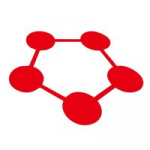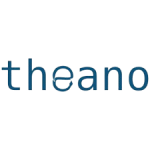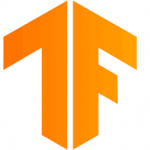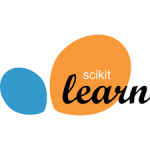Artificial intelligence and machine learning have everything you would have imagined about technologies of the future. Within the span of a few years, AI and ML are not only accessible to every person with a computer and smartphone but also with some impressive advancements. What takes the AI landscape to the next level? You can find a perfect answer to such questions in the most popular deep learning frameworks that can help in creating deep neural networks.
Deep learning is an advanced subdomain of machine learning that empowers AI models to improve continuously without any intervention or explicit programming. Deep learning models don’t have any boundaries on the ability to learn and understand massive collections of data. The applications of deep learning networks have attracted attention to deep learning frameworks. Let us learn about some of the notable deep learning frameworks used in the AI landscape.
Why is Deep Learning Important?
Machine learning works by using data to develop models that can analyze and extract information to make predictions. On the other hand, deep learning frameworks expand the capabilities of general ML models to help them understand more complex data features. If you want to find the answers to the question, “Which framework is best for deep learning?” then you must know what deep learning can achieve. Deep learning models accept not only numbers as input but also text, video, images, and sound. Therefore, deep learning has the potential to solve different types of real-world problems, such as detecting traffic patterns or diseases.
Deep learning models follow an architecture that involves multiple layers for analyzing and learning from large repositories of data. You can find a broad range of applications of deep learning models for different tasks, such as image recognition, sentiment analysis, fraud detection, speech recognition, and many more. However, implementation of DL models is significantly difficult as they need a large amount of computing power and data. Therefore, you would have to rely on deep learning frameworks to achieve your desired goals.
Excited to learn the fundamentals of AI applications in business? Enroll now in the AI For Business Course
What are Deep Learning Frameworks?
You can find the best deep learning framework for a specific use case only when you know about its utility. Deep learning frameworks are software libraries that help machine learning professionals and data scientists with essential tools required for training deep learning models. The packages in the library include activation functions, layers, loss functions, and optimizers that help you create different architectures for deep neural networks.
Another important highlight of deep learning frameworks is the fact that they have a programming interface. The programming interface is an ideal pick for training models that leverage coding languages such as Python. The top deep learning frameworks offer promising features for tasks such as data preprocessing, model evaluation, data augmentation, and deploying models. In simple words, deep learning frameworks offer tools that help you upload data and train the model with minimal effort.
Want to understand the importance of ethics in AI, ethical frameworks, principles, and challenges? Enroll now in Ethics Of Artificial Intelligence (AI) Course!
What are the Best Deep Learning Frameworks in 2024?
Deep learning frameworks offer a collection of APIs, tools, and abstractions that help build and train deep learning models. The frameworks help simplify the process of creating and deploying neural networks. As a result, engineers and researchers can focus on the more complicated tasks. Here are the top ten frameworks that would shape the present and future of deep learning.
-
PyTorch
 PyTorch is a popular Python library that helps in development of deep learning projects for tasks like natural language processing and computer vision. It is a prominent addition to the deep learning framework list with two formidable features. First of all, it uses Tensor computing, which offers the advantage of better acceleration through GPU.
PyTorch is a popular Python library that helps in development of deep learning projects for tasks like natural language processing and computer vision. It is a prominent addition to the deep learning framework list with two formidable features. First of all, it uses Tensor computing, which offers the advantage of better acceleration through GPU.
On the other hand, deep neural networks can also be developed over a tape-based automatic differentiation system. You can also find Optim and nn modules with PyTorch that serve distinct functionalities such as optimization algorithms, defining computational graphs, and making gradients.
-
Caffe
 Caffe or Convolutional Architecture for Fast Feature Embedding is another deep learning framework that has gained popularity in the AI landscape. It is one of the notable responses to “Which framework is best for deep learning?” for computer vision tasks, such as image classification.
Caffe or Convolutional Architecture for Fast Feature Embedding is another deep learning framework that has gained popularity in the AI landscape. It is one of the notable responses to “Which framework is best for deep learning?” for computer vision tasks, such as image classification.
Caffe also supports different deep learning architectures, such as fully connected neural networks, Convolutional Neural Networks, Long Short-Term Memory networks, and Recurrent Neural Networks. It was integrated into PyTorch and still remains a preferred choice for computer vision and different deep-learning projects.
-
Microsoft Cognitive Toolkit
 The Microsoft Cognitive Toolkit, or CNTK, is also a popular deep learning framework that offers easier training. It is an open-source framework that can effectively train convolutional neural networks for text, image, and speech-based data. CNTK is the best deep learning framework for implementing reinforcement learning models and Generative Adversarial Networks.
The Microsoft Cognitive Toolkit, or CNTK, is also a popular deep learning framework that offers easier training. It is an open-source framework that can effectively train convolutional neural networks for text, image, and speech-based data. CNTK is the best deep learning framework for implementing reinforcement learning models and Generative Adversarial Networks.
The most impressive feature of CNTK is the assurance of better scalability and performance when they run on multiple machines. However, it is still limited in terms of mobile compatibility capabilities due to a lack of support for ARM architecture.
-
MX Net
 Another popular addition among DL frameworks, MX Net, has gained popularity for offering better efficiency, flexibility, and productivity. It offers compatibility with C++, Python, and R. Most important of all, MX Net sits among the most popular deep learning frameworks with features for distributed training.
Another popular addition among DL frameworks, MX Net, has gained popularity for offering better efficiency, flexibility, and productivity. It offers compatibility with C++, Python, and R. Most important of all, MX Net sits among the most popular deep learning frameworks with features for distributed training.
The framework offers efficient non-linear scaling that makes the best use of the resources. Users can enjoy the flexibility of training their deep learning models in any programming language they want.
-
Chainer
 The list of open-source frameworks for deep learning must also draw attention towards Chainer. It is one of the top deep learning frameworks with an intuitive and flexible library for managing dynamic computation graphs.
The list of open-source frameworks for deep learning must also draw attention towards Chainer. It is one of the top deep learning frameworks with an intuitive and flexible library for managing dynamic computation graphs.
Therefore, it is a useful tool for rapid experimentation and prototyping. Interestingly, it is one of the first frameworks to embrace the define-by-run approach. The easy-to-use API, alongside support for different deep learning networks, makes Chainer a favorable pick for deep learning projects.
Identify new ways to leverage the full potential of generative AI in business use cases and become an expert in generative AI technologies with Generative AI Skill Path
-
Theano
 Theano is also a notable open-source DL framework with features for effective evaluation and modification of mathematical expressions. It was developed with Python using syntax similar to NumPy.
Theano is also a notable open-source DL framework with features for effective evaluation and modification of mathematical expressions. It was developed with Python using syntax similar to NumPy.
Theano is a mandatory addition to any deep learning framework list as it can serve different tasks, such as image classification, speech recognition, and natural language processing. Apart from offering support for different deep learning networks, Theano also serves tools that can help with debugging and visualization.
-
TensorFlow
 Your search for the answers to “Which framework is best for deep learning?” would obviously lead you to TensorFlow before any other framework. The open-source and free framework for machine learning has also evolved as a deep learning framework.
Your search for the answers to “Which framework is best for deep learning?” would obviously lead you to TensorFlow before any other framework. The open-source and free framework for machine learning has also evolved as a deep learning framework.
Developers can use TensorFlow to create massive neural networks by leveraging data flow graphs to include different layers.
-
GGML
 If you are looking for DL frameworks to help you with large-scale training, then GGML might be the best option for you. The open-source tensor library supports complex deep-learning models and works best for high-performance computing.
If you are looking for DL frameworks to help you with large-scale training, then GGML might be the best option for you. The open-source tensor library supports complex deep-learning models and works best for high-performance computing.
It has been developed using C and offers compatibility with different platforms alongside improving training speed with limited memory requirements.
-
Keras
 Another prominent DL framework you would come across in 2024 is Keras. As an open-source framework, it continuously evolves, and its features make it more interesting for users. For example, it offers a Python interface to develop artificial neural networks. It is the best deep learning framework with a simple and easy-to-use interface.
Another prominent DL framework you would come across in 2024 is Keras. As an open-source framework, it continuously evolves, and its features make it more interesting for users. For example, it offers a Python interface to develop artificial neural networks. It is the best deep learning framework with a simple and easy-to-use interface.
One of the significant features of Keras is the ability to scale to large GPU clusters or complete TPU pods. In addition, the functional API of Keras supports models featuring a non-linear topology, multiple inputs or outputs, and shared layers.
-
Scikit-learn
 The final addition to a collection of DL frameworks would be Scikit-learn, which aims to offer effective deep learning tools. The primary goal of the library revolved around reaching better robustness and support for production systems. It focuses on resolving concerns such as code quality, documentation, ease of use, performance, and collaboration.
The final addition to a collection of DL frameworks would be Scikit-learn, which aims to offer effective deep learning tools. The primary goal of the library revolved around reaching better robustness and support for production systems. It focuses on resolving concerns such as code quality, documentation, ease of use, performance, and collaboration.
The interface of Scikit-learn is based on Python. However, c-libraries also offer promising advantages for performance in using arrays and matrices. Companies such as JP Morgan have been using Scikit-learn for better statistical analytics and linear algebra.
Become a master of generative AI applications by developing expert-level skills in prompt engineering with Prompt Engineer Career Path
Final Words
The arrival of deep learning has enhanced the different practical applications of AI and machine learning. Deep learning empowers machines to think and reason like humans. However, the collection of the most popular deep learning frameworks available in the AI landscape right now can create confusion for developers, researchers, and data scientists. Interestingly, you can pick a combination of DL frameworks for your project according to your requirements. For example, beginners can go with user-friendly frameworks such as TensorFlow.
As you learn more about the other top deep learning frameworks, you can learn about the different factors that can help you choose a specific framework. Some of the important factors that might influence your choice of DL framework are the type of problem, the hardware you have, and the programming language you want to use. Find the best resources to learn more about deep learning and pick the right framework for your projects now.
The post Top 10 Deep Learning Frameworks appeared first on 101 Blockchains.



